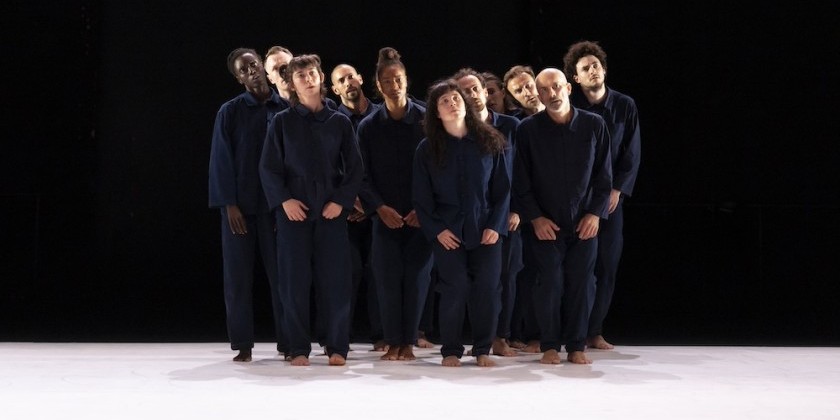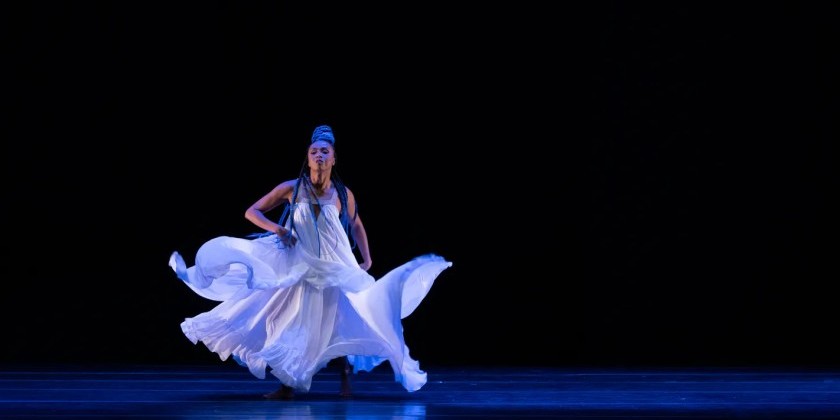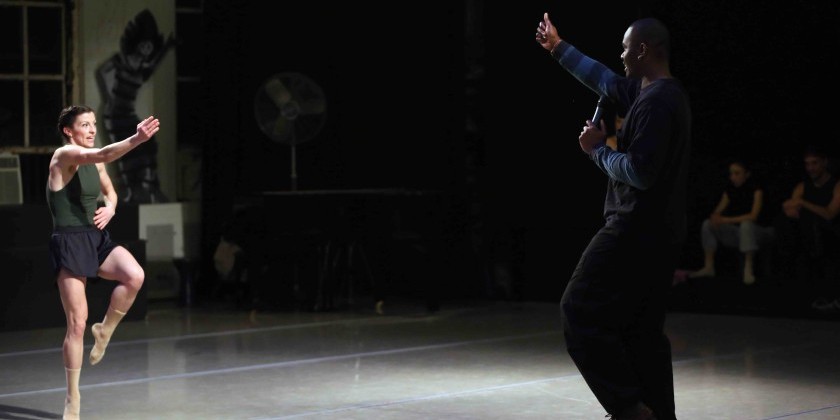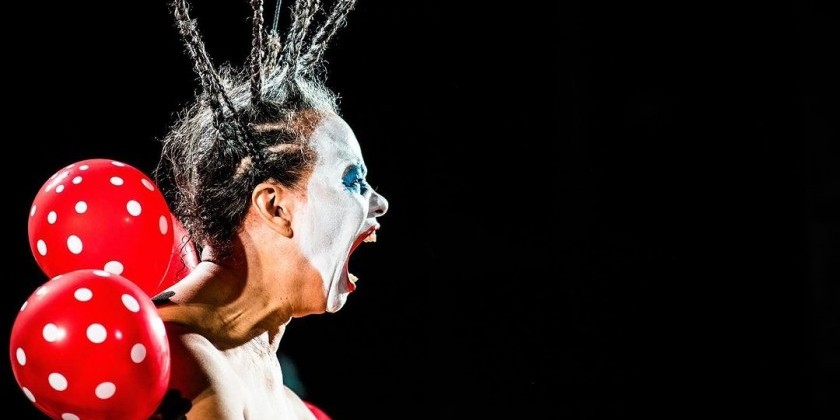IMPRESSIONS: “Heart of Brick” by serpentwithfeet, Raja Feather Kelly and Donte Collins
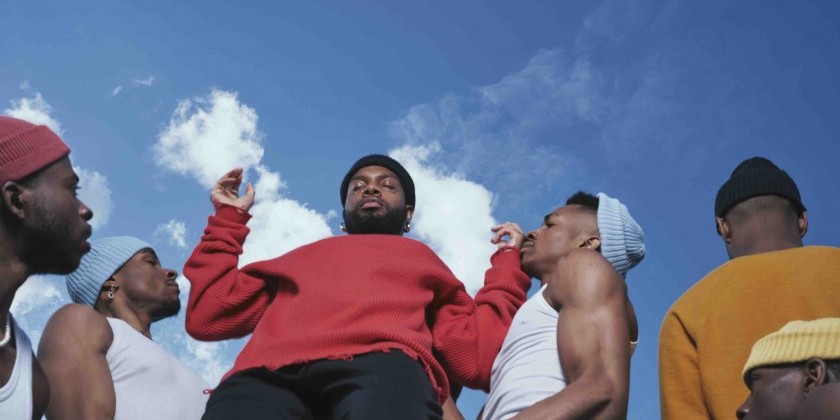
Music and Concept: serpentwithfeet
Choreography and Dramaturgy: Raja Feather Kelly
Playwright: Donte Collins in collaboration with serpentwithfeet
Director: Wu Tsang
Costume Designer: Julio Delgado | Set Design: Carlos Soto
Dancers: Shaquille Charles, Dylan M. Contreras, Justin Daniels, Matthew Deloch, Chrystion Dudley, Brandon Gray, and Nelson “Nellie” Enrique Mejia Jr.
Interlacing dance, voiceover, and live music, Heart of Brick is an epic choreo-tale that tells the story of a Black Queer Man sifting through his insecurities, fears, and dreams to find new love. Its premiere at The Joyce Theater marks the beginning of a tour culminating with the release of a new album by serpentwithfeet.
Raja Feather Kelly (choreographer), Wu Tsang (Director), serpentwithfeet (music, concept, and text), and Donte Collins (text) manifest a reality often unseen: Black Queer Men having fellowship, platonic intimacy, longing for real connection, healing, and being loved.
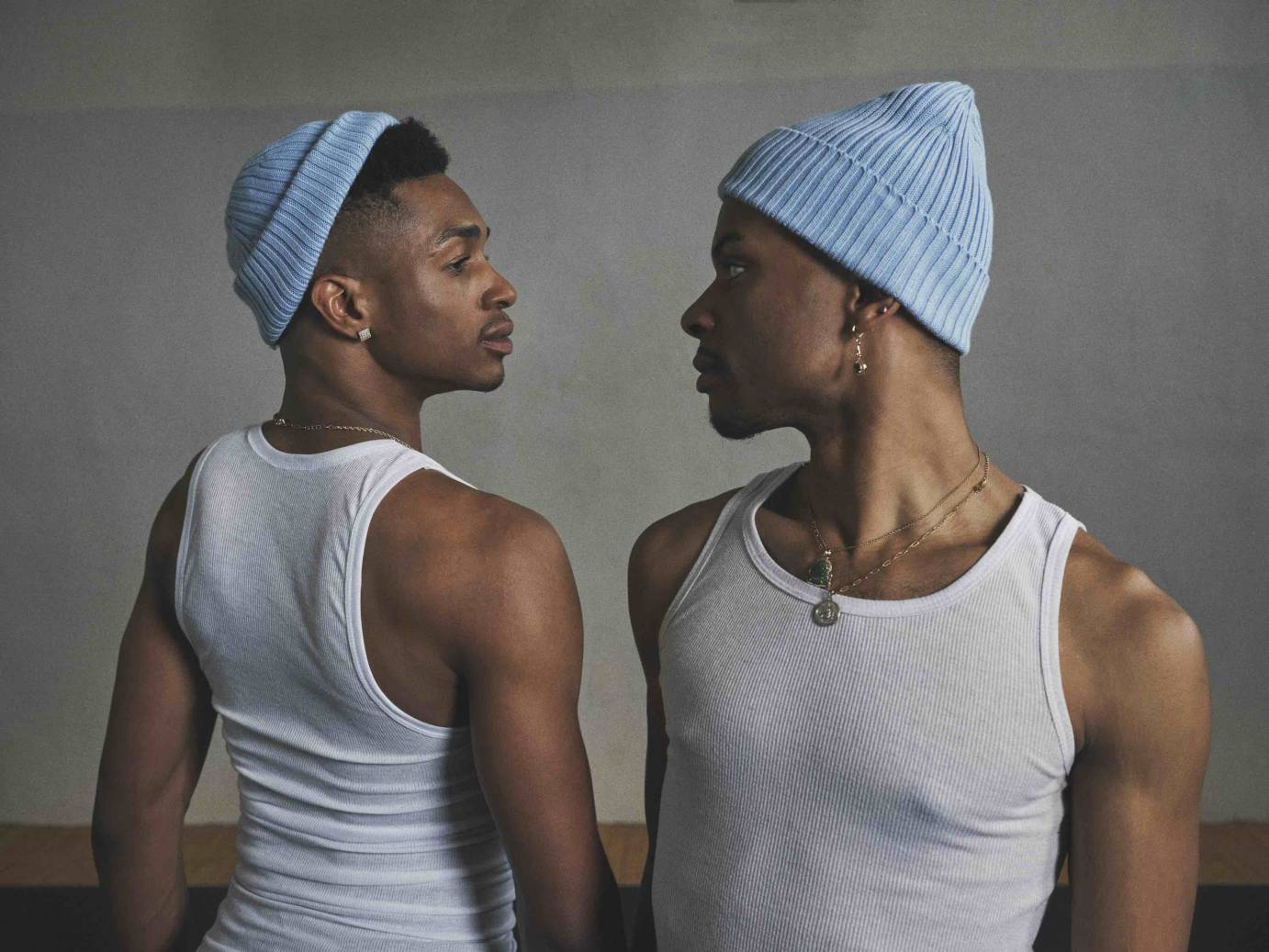
“When LOVE looks back at me does it see anything at all?“ asks serpentwithfeet, who appears cozy under a plush red velvet blanket. He invites the audience into his comfortable home, offers us a glass of red wine, and asks if we think he should go out dancing at the club and maybe find new love. His voice, soft, sweet, and soulful, beckons us to further open the door to his internal world. This form of call and response initiates an important channel of dialogue between the artists and the audience.
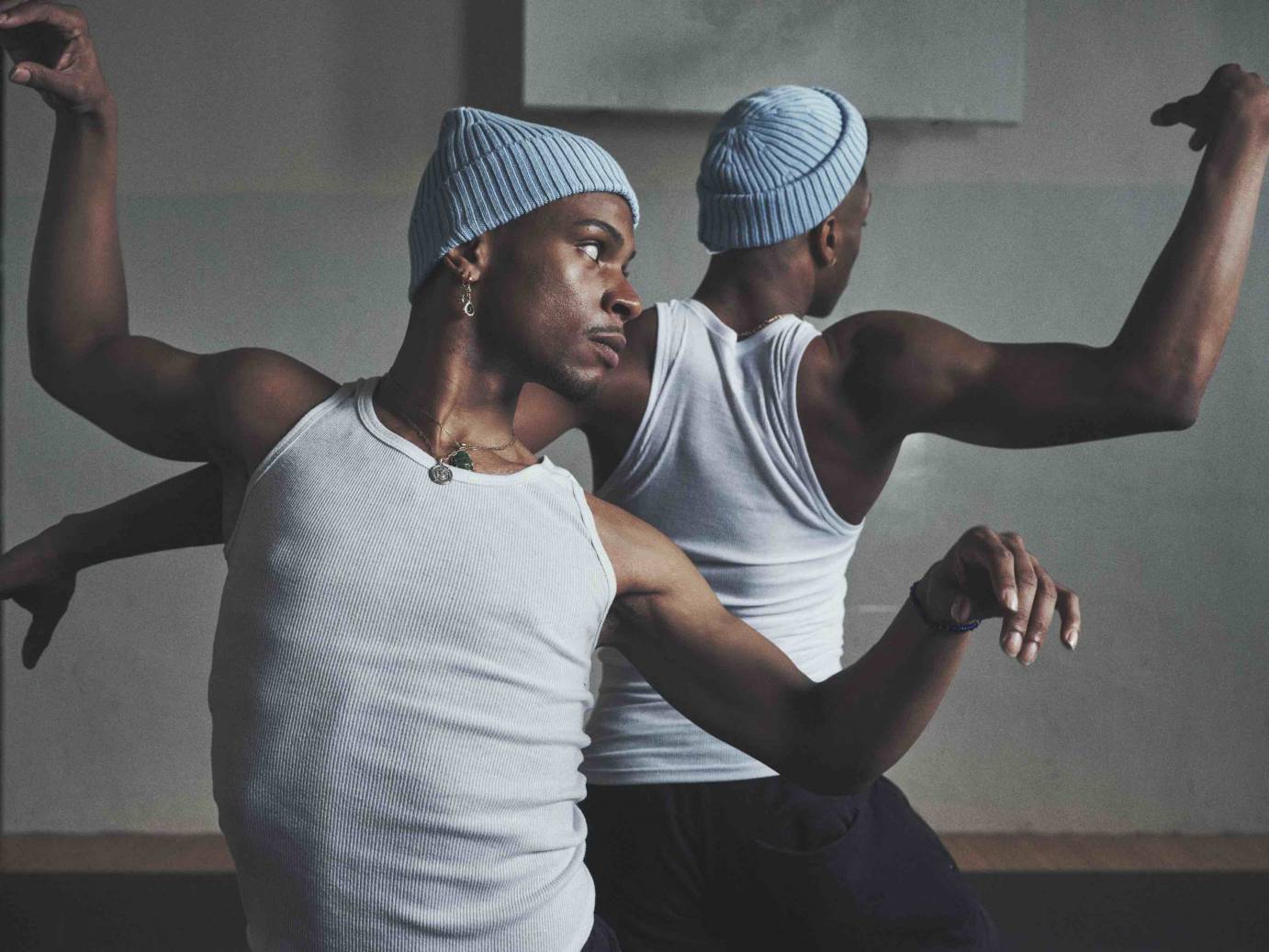
With a flash of light, a shimmering scrim magically transforms one space into the next. Neon lights let us know that we have arrived in the club. Voiceovers of the ensemble's individual voices are heard and paired with their habitual gestures. Their physical specificity effectively communicates their intention and desires. As the men vogue, it is as though we’re watching from behind the scenes of a music video.
As serpentwithfeet’s evening out comes to an end, his character and Brick meet in private for the first time. Standing face to face, they both take off a single gem encrusted glove. A gentle hand lands on the waist and is pulled over a shoulder until they hold hands while longingly staring each other in the eyes. With each embrace time passes and I can feel their connection deepen. As they make their way to the bedroom floor, we hear them ask questions about their future.
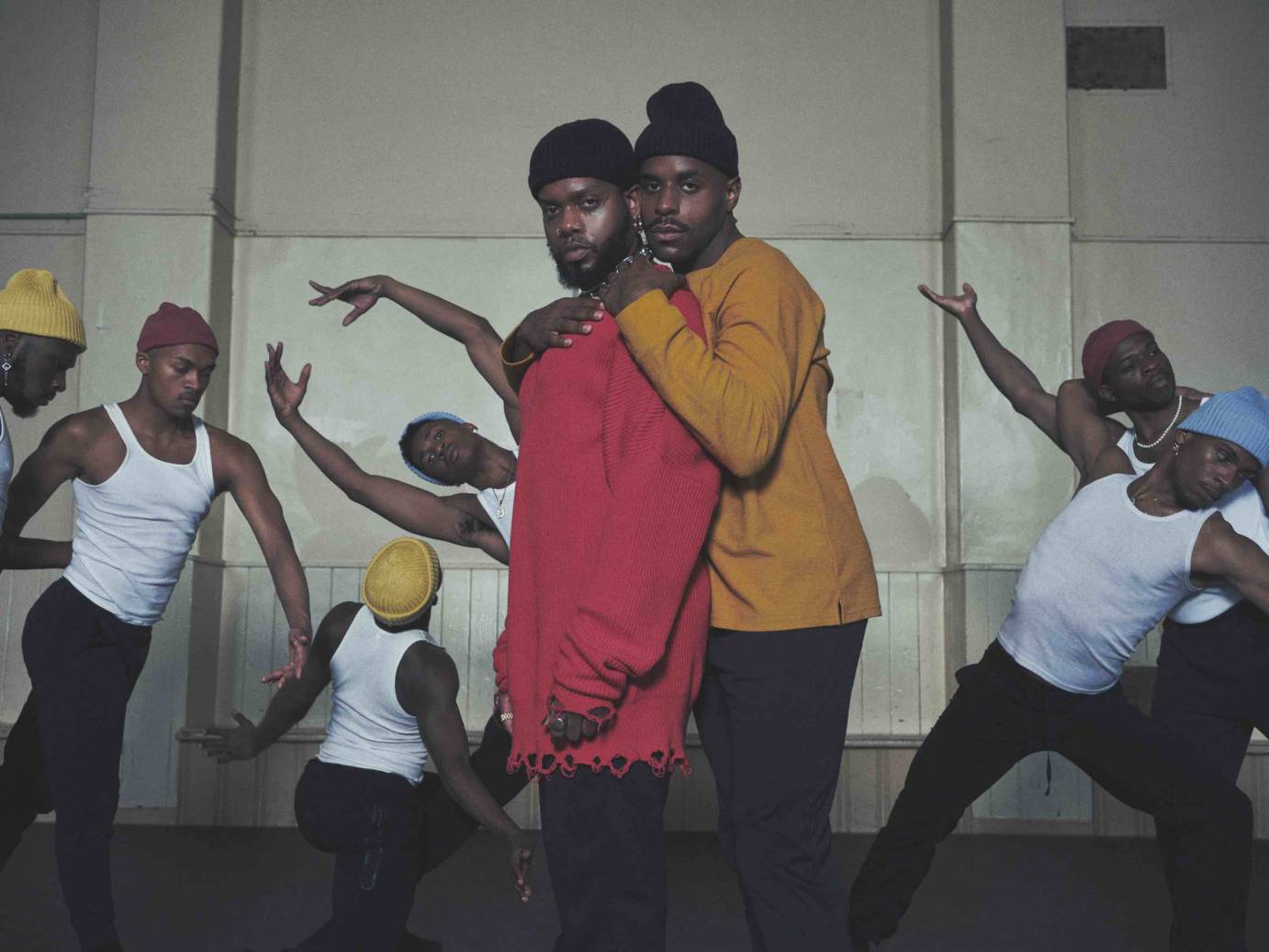
I am surprised that the most intimate display of affection is serpentwithfeet massaging Brick’s forearm. The scene doesn’t exploit their sexuality, fetishize or objectify, but offers insight into their sensuality as two Black Queer Men who are intentionally learning about one another and are interested in more than just sex.
As the story progresses through reality into the liminal space between life, death, and dreams, I am grounded by the profound simplicity of the set and the lighting; the latter inspires subconscious emotions. I consider the color of chakras and if this is an additional element explored in the design. This spiritual way of conversing between the audience and the artists offers a unique immediate reciprocity.
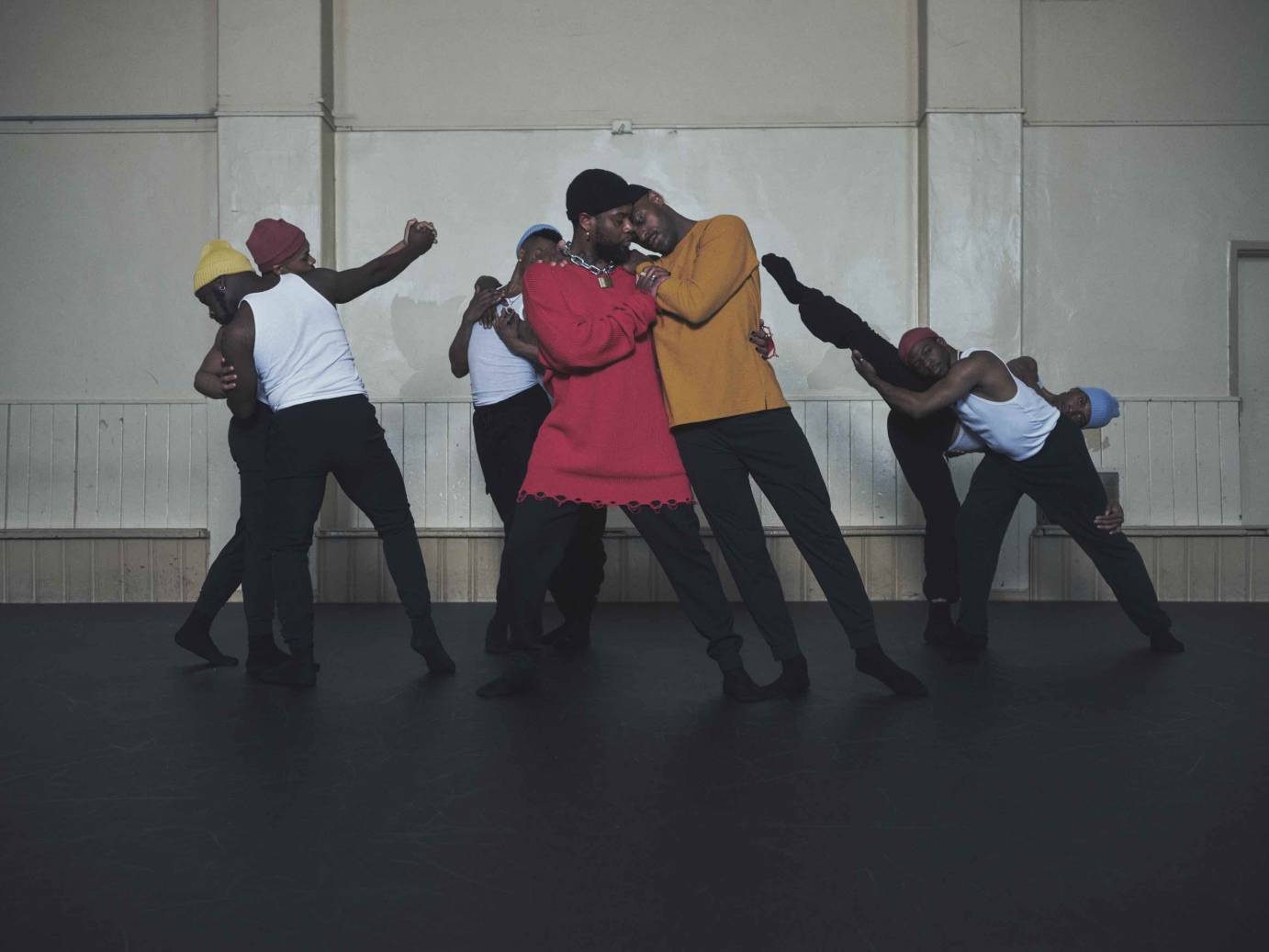
Julio Delgado’s costumes are detailed, elegant, and support the poetic world before us. Darius, an omnipotent earth-dwelling god appears under a blue aquamarine light, crouching in a raincoat, collar popped, silver sequin gloves up to his forearms, and jeweled tassels dangling from the brim of a sun hat covering his face. Alone, Darius’ presence is spiritually heightened, beautiful, and a much welcomed shift to pause and reflect. Time slows down and the world expands, offering a moment of rest and letting the story settle. Before exiting, he warns us that “the young flowers are poisoned.”
In unison, the ensemble sweeps and flutters across the floor wearing white and gold Victorian ruffles around their wrists, ankles, and necks, complete with ribbed bodices and shorts. As these ghostly figures dance into the light I recognize them as “The Poisoned Flowers.” I wonder if they represent young gay men whose dreams, hopes, and lives have been dashed because of drug use and/or for daring to be their complete selves?
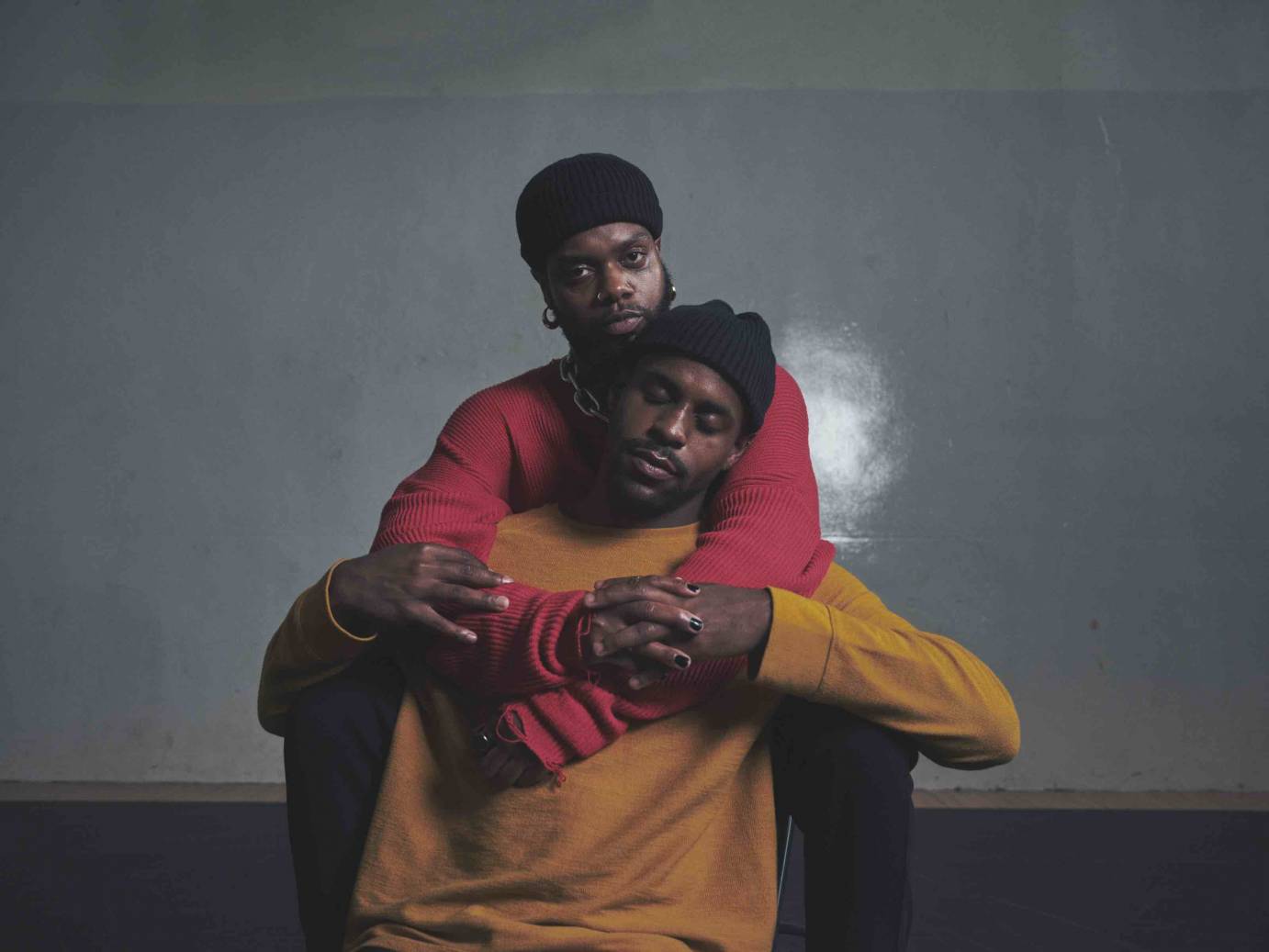
The men huddle around serpentwithfeet and Brick, each pair holding one another like a Black Queer Male version of La Pietà struck me as something to remember. Seeing Black men vulnerable, being shelter for one another, healing, and lifting each other up feels like an application of the psychic salve we all need currently. It is valuable.
Heart of Brick is wonderfully dense with layers of striking imagery, poetic text, spiritual machinations, and a body language of love that weaves us in and out of itself. It is, quite simply, a love story, and resonates like a beautiful dream you can endlessly sift through. I imagine Heart of Brick will age like fine wine, and the stories of Black Queer Men on their journey to loving and expressing themselves wholly and unapologetically will have a profound impact on all.








